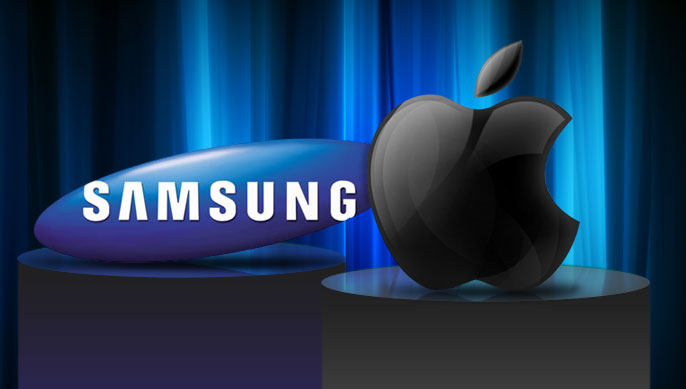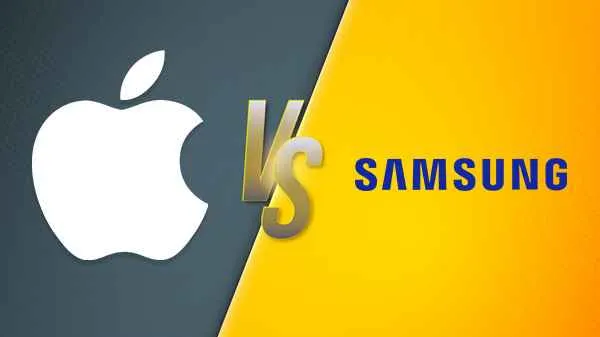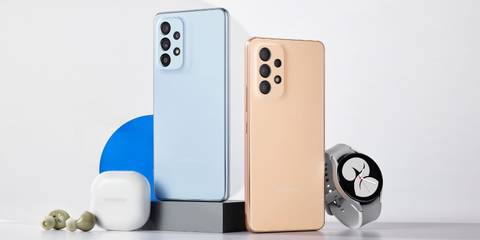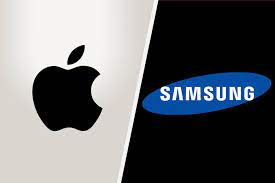Samsung vs Apple
INTRODUCTION
Samsung and Apple are two of the most prominent and influential companies in the tech industry, consistently pushing the boundaries of innovation and design. Both brands have a loyal customer base and a wide range of products, from smartphones and tablets to smartwatches and laptops. The competition between Samsung and Apple is fierce, with each company striving to outdo the other in terms of features, performance, and user experience. In this blog, we will explore the strengths and weaknesses of both brands, comparing their flagship products, ecosystem integration, design philosophies, and overall impact on the tech landscape. Whether you're a die-hard Apple fan or a devoted Samsung user, this comparison will provide valuable insights into what makes these tech giants stand out and how they continue to shape the future of technology.
HISTORY
Samsung was founded in 1938 as a trading company and has since evolved into a global leader in electronics, particularly known for its innovative smartphones and consumer electronics. Apple was founded in 1976 by Steve Jobs, Steve Wozniak, and Ronald Wayne, and it quickly became renowned for its pioneering personal computers, later revolutionizing the tech industry with the introduction of the iPhone in 2007. Both companies have a rich history of innovation, with Samsung excelling in hardware and display technology, while Apple has been celebrated for its design and user experience. Over the years, Samsung and Apple have continuously pushed the boundaries of technology, shaping the way we interact with our devices and setting new standards for the industry.
OPERATING SYSTEM
Samsung primarily uses the Android operating system, developed by Google, which offers a high degree of customization and flexibility. Android's open-source nature allows users to personalize their devices extensively and access a wide variety of apps through the Google Play Store. Apple, on the other hand, uses iOS for its devices, which is known for its sleek design, intuitive interface, and seamless integration across Apple products. iOS is a closed ecosystem, providing a more controlled and secure environment with regular updates and a curated app store. The choice between Android and iOS often comes down to personal preference, with Android offering more freedom and customization, while iOS provides a polished and cohesive user experience.
USER INTERFACE
Samsung’s user interface, known as One UI, is designed to make using large smartphones more comfortable and intuitive. It features a clean, modern design with customizable options and advanced features like Edge Panels and Samsung DeX. One UI emphasizes ease of use with a focus on one-handed operation and a visually appealing layout.
Apple’s user interface, iOS, is renowned for its simplicity and consistency. It features a minimalist design with smooth animations and intuitive navigation. iOS emphasizes a seamless and uniform experience across all Apple devices, ensuring that users can easily transition between their iPhone, iPad, and Mac. The interface is user-friendly, with a focus on accessibility and ease of use, making it popular among a wide range of users.
BUILD QUALITY
Samsung devices often feature high-quality materials like glass and metal, with attention to durability and sleek design. Many of their flagship models, such as the Galaxy S series, use premium materials and advanced manufacturing processes, resulting in robust and visually striking devices. Samsung also incorporates water and dust resistance in many models, enhancing their resilience.
Apple devices are known for their meticulous build quality, using materials such as aluminum, stainless steel, and ceramic. Apple emphasizes precision engineering and a premium feel in its products, with a focus on durability and aesthetics. Devices like the iPhone and MacBook are crafted to ensure a high standard of build quality and long-term reliability, often setting benchmarks for the industry in terms of design and construction.
ADVANTAGES
**Samsung Advantages:**
1. **Customization:** Offers extensive customization options through Android and One UI.
2. **Hardware Innovation:** Features cutting-edge technology like AMOLED displays and advanced camera systems.
3. **Variety:** Provides a wide range of devices across different price points and specifications.
4. **Expandable Storage:** Many models support microSD cards for additional storage.
5. **Integration:** Strong integration with other Samsung products and services, such as Samsung Pay and SmartThings.
**Apple Advantages:**
1. **Ecosystem Integration:** Seamless integration across Apple devices, including iPhone, iPad, Mac, and Apple Watch.
2. **User Experience:** Consistent and intuitive user interface with regular updates and a controlled app environment.
3. **Build Quality:** Premium materials and meticulous craftsmanship.
4. **Security:** Strong focus on privacy and security with regular updates and features like Face ID and encrypted messaging.
5. **Customer Support:** Highly regarded customer service and support through Apple Care.
DISADVANTAGES
**Samsung Disadvantages:**
1. **Bloatware:** Pre-installed apps that can be unnecessary and impact performance.
2. **Fragmentation:** Variability in software updates across different models and regions.
3. **Customization Complexity:** Extensive customization options can be overwhelming for some users.
4. **Price Variability:** High-end models can be expensive, and budget models might compromise on features.
**Apple Disadvantages:**
1. **Limited Customization:** Less flexibility in customizing the user interface and settings.
2. **Higher Price:** Generally higher cost compared to many Android devices with similar specifications.
3. **No Expandable Storage:** Lack of support for microSD cards or expandable storage.
4. **Compatibility:** Limited compatibility with non-Apple products and services.
5. **Proprietary Accessories:** Reliance on proprietary accessories and charging cables.
MARKET SHARE
**Samsung:** As one of the largest smartphone manufacturers globally, Samsung holds a significant market share. It frequently leads in the number of units sold, thanks to its wide range of devices catering to various segments, from budget to premium. Samsung's market dominance is bolstered by its innovation in display and camera technology.
**Apple:** Apple commands a substantial share of the premium smartphone market, known for its high profitability per unit sold. While it may not lead in total unit sales compared to Samsung, Apple’s iPhones consistently hold a significant share in high-end markets. The brand’s strong ecosystem and loyal customer base contribute to its robust market presence.
CONCLUSION
Samsung and Apple are two of the most influential players in the tech industry, each with distinct strengths and market approaches. Samsung excels in offering a diverse range of devices with advanced hardware and customization options, catering to a broad audience. In contrast, Apple is renowned for its seamless ecosystem, premium build quality, and intuitive user experience. While Samsung provides flexibility and innovation across different price points, Apple focuses on a cohesive and secure environment with a strong emphasis on design and user satisfaction. Ultimately, the choice between Samsung and Apple often comes down to personal preference and priorities, whether it’s customization and variety with Samsung or a refined, integrated experience with Apple.
SUMMARY
Samsung and Apple are leading technology giants, each with unique strengths. Samsung offers diverse devices with high customization, advanced hardware, and wide market coverage. Apple is known for its premium build quality, seamless ecosystem, and user-friendly experience. Samsung excels in innovation and flexibility, while Apple focuses on design and integration. The choice between them depends on individual preferences for features, ecosystem, and device experience.
__https://exe.io/OsLOkbIh_


:format(webp)/s3/static.nrc.nl/spoetnik/files/2015/05/apple-samsung.jpg)






Comments
Post a Comment